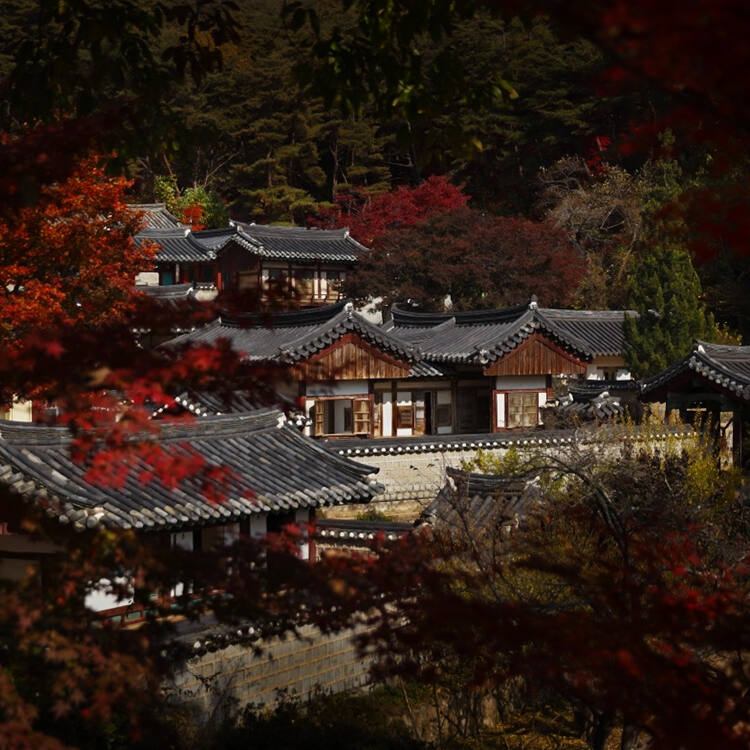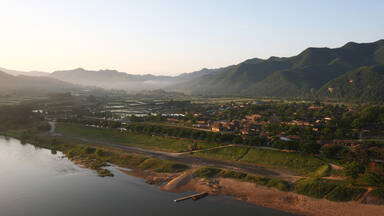Seowon, Korean Neo-Confucian Academies
Seowon, Korean Neo-Confucian Academies
The property is located in central and southern parts of the Republic of Korea, and comprises nine seowon, representing a type of Neo-Confucian academy of the Joseon dynasty (15th -19th centuries CE). Learning, veneration of scholars and interaction with the environment were the essential functions of the seowons, expressed in their design. Situated near mountains and water sources, they favoured the appreciation of nature and cultivation of mind and body. The pavilion-style buildings were intended to facilitate connections to the landscape. The seowons illustrate a historical process in which Neo-Confucianism from China was adapted to Korean conditions.
Description is available under license CC-BY-SA IGO 3.0
Seowon, académies néo-confucéennes coréennes
Le bien comprend neuf seowon représentant un type d’académie néo-confucéenne de la dynastie Joseon (XVe-XIXe siècles EC) se trouvant au centre et au sud du pays. L’enseignement, la vénération des érudits et l’interaction avec l’environnement étaient les fonctions essentielles des seowon, qui se reflètent dans leur conception. Situés près de montagnes et de sources d’eau, ils favorisaient l’appréciation de la nature ainsi que la culture de l’esprit et du corps. Les édifices en forme de pavillons devaient faciliter les liens avec le paysage. Les seowon illustrent un processus historique dans lequel le néoconfucianisme venu de Chine fut adapté aux conditions coréennes.
Description is available under license CC-BY-SA IGO 3.0
سيوون، مدارس الكونفوشيوسية الجديدة
source: UNESCO/CPE
Description is available under license CC-BY-SA IGO 3.0
韩国新儒学书院
该遗产包括9座书院,它们分布于韩国中部和南部,是朝鲜王朝(15-19世纪)新儒学书院的代表。书院的主要功能为传道、尊师、与自然互动,这在书院的设计中亦得到体现。依山傍水的书院是欣赏自然、修身养性之所,建筑的样式与自然景观融为一体。韩国新儒学书院展示了中国新儒学在韩国发展演变的历史进程。
source: UNESCO/CPE
Description is available under license CC-BY-SA IGO 3.0
Совон - корейские неоконфуцианские академии
source: UNESCO/CPE
Description is available under license CC-BY-SA IGO 3.0
Seowon – Academias neoconfucianas coreanas
Este sitio comprende nueve “seowon” o academias neoconfucianas situadas en el centro y sur del país, que datan de la era de la dinastía Joseon (siglos XV-XIX). Las principales funciones de estas academias giraban en torno a la enseñanza, la veneración de los eruditos y la interacción con la naturaleza, y todas esas actividades se reflejan en el diseño de sus edificaciones en forma de pabellones que propician el estrechamiento de los vínculos entre el ser humano y el paisaje circundante. Destinadas a cultivar las facultades humanas, tanto espirituales como corporales, las “seowon” son también ilustrativas del proceso histórico de adaptación del neoconfucianismo procedente de China a las condiciones específicas de Corea.
source: UNESCO/CPE
Description is available under license CC-BY-SA IGO 3.0
Outstanding Universal Value
Brief synthesis
The Seowon, Korean Neo-Confucian Academies is a serial property which comprises nine seowon representing a type of Neo-Confucian academy of the Joseon Dynasty (from the mid-16th to mid-17th centuries CE). It is an exceptional testimony to cultural traditions associated with Neo-Confucianism in Korea.
The components are Sosu-seowon, Namgye-seowon, Oksan-seowon, Dosan-seowon, Piram-seowon, Dodong-seowon, Byeongsan-seowon, Museong-seowon and Donam-seowon, and these are located across the central and southern parts of the Republic of Korea.
The property exhibits an outstanding testimony to thriving Neo-Confucian academies that promoted learning of Neo-Confucianism, which was introduced from China and became fundamental to every aspect of Korea.
The local literati at seowon created educational system and tangible structures conducive to fully commit themselves to learning. Learning, veneration and interaction were the essential functions of the seowon which are closely reflected in their design. The seowon were led by sarim or the class of local intellectuals. The seowon developed and flourished as centres for the interests of the sarim.
The primary factor in siting the seowon was the association with venerated scholars. The second factor was the landscape, and seowon are located near mountains and water as part of appreciating nature and cultivating the mind and body. Pavilion style buildings in the seowon facilitated connections to the landscape.
The scholars studied Neo-Confucian classics and literary works and endeavoured in understanding the universe and becoming ideal person. They venerated late contemporary Neo-Confucian figures, and formed strong academic lineage spearheaded by venerated scholars. Furthermore, local literati made significant contribution to disseminating principles of Neo-Confucianism through various social and political activities based on the property.
Criterion (iii): The Seowon, Korean Neo-Confucian Academies are exceptional testimony to cultural traditions associated with Neo-Confucianism in Korea, in the form of educational and social practices, many of which continue. The seowon illustrate an historical process in which Neo-Confucianism from China was tailored to Korean local conditions resulting in academies which are exceptional testimony of this transformative and localising process in terms of function, planning and architecture.
Integrity
The property retains all attributes that reflect the Outstanding Universal Value of the property. These are the buildings and constructions constituting the seowon, ancillary buildings, entrance gate, dismounting stele, commemorative stele, immediate environments including hills, streams, roads, plantings and visual catchments. The attributes of the property are generally in excellent condition.
The major pressures on the property, development, insect damage, fire, earthquakes and visitors, are being adequately managed. However, they should continue to be monitored.
Authenticity
The property meets the requirements of authenticity. The form and design, and materials and substance are basically intact. The use and function of the seowon, and their traditions, are largely as they were through history, although noting that the educational role has been largely diminished. The location and setting of the seowon have been generally retained, although it is noted that two components have been relocated in the historical past. The intangible heritage, and the spirit and feeling of the seowon have been generally retained.
Management and protection requirements
The primary protection of the property is provided by the Cultural Heritage Protection Act, with additional protection offered by other heritage laws enacted by the Cultural Heritage Administration of Korea. These other laws are the Act on Cultural Heritage Maintenance, Etc. and the Act on the Safeguarding and Promotion of Intangible Cultural Heritage. The laws are supported by Presidential decrees and ministerial orders.
The nine components are all state-designated heritage.
These legal instruments play a major role in ensuring the systematic conservation of the property in terms of carrying out repairs and safeguarding venerations.
The relevant provinces have also prepared heritage protection ordinances based on the Cultural Heritage Protection Act. These ordinances also offer a basis for the establishment and operation of an organisation for the integrated management of the property.
The management system comprises the Seowon Foundation, seowon steering committees, and central and local (provincial and municipal) governments. The Cultural Heritage Protection Act requires the property to be managed by the relevant local government or seowon community. The Seowon Foundation is in charge of integrated management of the property. The components are managed on a daily basis by government and seowon personnel, with the seowon steering committee responsible for operations and management.
The central government Cultural Heritage Administration provides support and supervision. Local governments also provide support to the Foundation. Conservation expertise is available from the Cultural Heritage Administration as well as the relevant local governments.
Each seowon has a comprehensive maintenance plan which is equivalent to a management plan. In addition, there are a range of key conservation and management manuals and guidelines. An integrated management document is being developed.
Some risk preparedness exists, and additional planning and systems are being developed.
Current visitor management arrangements are satisfactory although a better integrated presentation of the nine components as a single property is needed.


